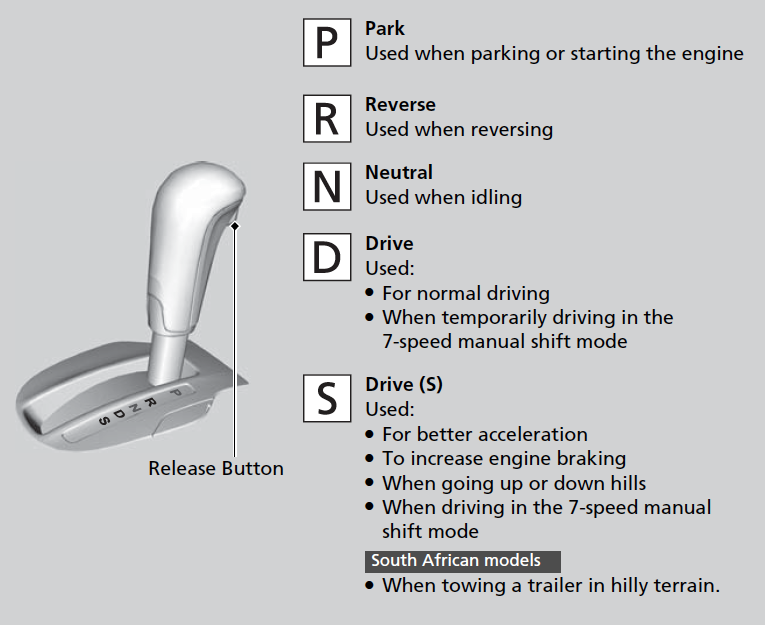Automatic cars have become increasingly popular over the years due to their ease of use and convenience․ One of the key aspects of driving an automatic car is understanding the various drive modes‚ particularly the ‘D’ (Drive) and ‘S’ (Sport) modes․ In this article‚ we will explore what these modes mean‚ how they work‚ and when to use them․
Understanding Automatic Transmission
Before diving into the specifics of ‘D’ and ‘S’ modes‚ it’s important to understand what an automatic transmission does․ An automatic transmission allows the vehicle to change gears without the driver needing to manually shift․ This provides a smoother driving experience and makes it easier for drivers‚ especially those who may not be familiar with manual transmissions․
What Does ‘D’ Mean?
The ‘D’ in automatic cars stands for ‘Drive;’ When you shift your gear lever into the ‘D’ position‚ the car is set to automatically select the appropriate gear based on the speed and load of the vehicle․ Here are the key features of the ‘D’ mode:
- Standard Driving: ‘D’ is ideal for everyday driving situations․ It allows for smooth acceleration and deceleration․
- Automatic Gear Shifting: The transmission will automatically shift through the gears as needed‚ providing a balance between performance and fuel efficiency․
- Convenience: This mode is perfect for city driving‚ highway cruising‚ and general use․
What Does ‘S’ Mean?
The ‘S’ in automatic cars stands for ‘Sport․’ This mode is designed for a more dynamic driving experience․ When you shift into ‘S‚’ the transmission alters its behavior in several ways:
- Higher RPMs: The engine will rev higher before shifting gears‚ which can provide more power and responsiveness․
- Quicker Shifts: The transmission will shift gears more quickly‚ enhancing acceleration and performance․
- Enhanced Control: ‘S’ mode may allow for more driver control‚ particularly in situations like overtaking or driving on winding roads․
When to Use ‘D’ and ‘S’ Modes
Knowing when to use ‘D’ and ‘S’ modes can enhance your driving experience․ Here are some scenarios for each mode:
When to Use ‘D’
- Daily Commute: Use ‘D’ for regular driving‚ such as commuting to work or running errands․
- City Driving: ‘D’ is ideal for stop-and-go traffic where smooth acceleration and braking are necessary․
- Fuel Efficiency: ‘D’ mode typically provides better fuel economy than ‘S’ mode․
When to Use ‘S’
- Sporty Driving: Engage ‘S’ mode when you want a more spirited driving experience‚ such as on a winding road or during spirited acceleration;
- Overtaking: Use ‘S’ mode for quicker acceleration when you need to pass another vehicle safely․
- Mountain Driving: ‘S’ mode can help maintain speed on inclines and provide better control on descents․
Benefits of Using ‘D’ and ‘S’ Modes
Both ‘D’ and ‘S’ modes have their unique advantages‚ making them suitable for different driving conditions:
Benefits of ‘D’ Mode
- Comfort: Provides a comfortable driving experience with minimal effort․
- Efficiency: Optimizes fuel consumption through automatic gear selection․
Benefits of ‘S’ Mode
- Performance: Delivers enhanced performance and responsiveness for a thrilling drive․
- Control: Offers more control over the vehicle’s power delivery‚ which can be beneficial in certain driving scenarios․
Understanding the ‘D’ and ‘S’ modes in an automatic car is essential for maximizing your driving experience․ ‘D’ mode is perfect for everyday driving‚ providing comfort and efficiency‚ while ‘S’ mode is designed for performance and engagement․ By knowing when to use each mode‚ you can enhance your driving experience and adapt to different road conditions effectively․
Whether you are a new driver or have years of experience‚ being aware of these modes can make a significant difference in how you interact with your vehicle․ Always remember to drive safely and choose the mode that best suits your needs at any given time․

